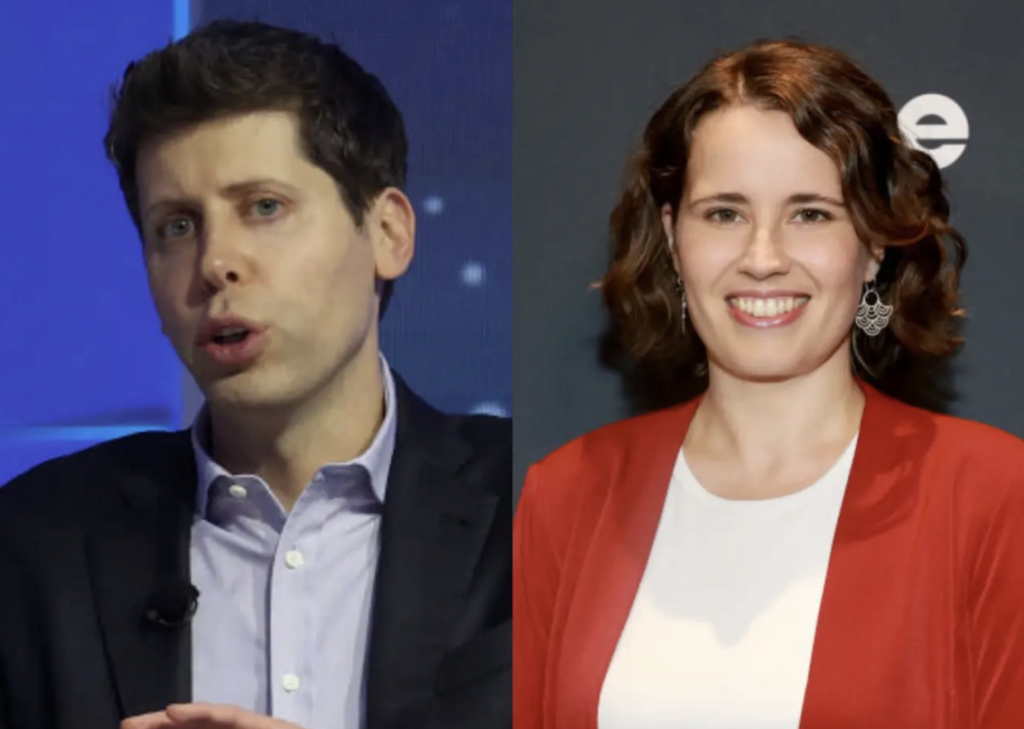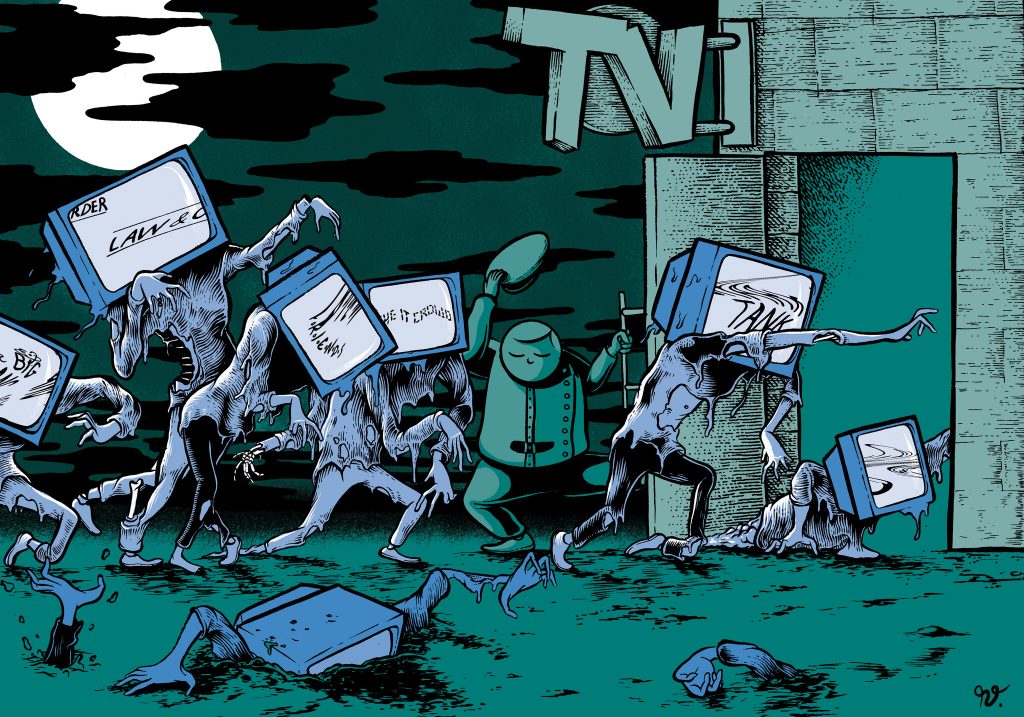Hey, everybody. We came across several interesting news items this week. Venezuela is dredging up 19th century treaties to justify the Florida-sized bite that it wants to take out of Guyana, its oil-rich next door neighbor. DeepMind, a Google subsidiary, announced Gemini, a family of multimodal models (the high end of which is more capable than GPT-4). Finally, IBM announced the Quantum System Two, a new line of hardware that distills decades of theory into practice.
Gemini is the only one of those things with immediate implications for marketers, but IBM’s new computers are too cool to leave out of today’s newsletter (especially when you consider the fact that their announcement video has only been watched 160k times– compare that to the also-released-on-Monday Grand Theft Auto 6 trailer with 130 million views; we want to spread the word). These machines are modular (meaning they can be combined with each other like enormous Legos), more than twice as big as refrigerators, and need to be operated in vacuum sealed rooms that are kept at 3° K.
As tempting as it is for us to use the 15 foot (~4.5 meter) height of these room-dominating computers to draw Space Race-era comparisons to the mainframes of IBM’s heyday, we really need to talk about how cold three degrees Kelvin is. It’s pretty close to the coldness limit that physics allows for. If you’ve ever seen a video of water freezing before it hits the ground after someone in Canada or Siberia throws it into the winter air, you should know that we’re talking about an absence of heat that doesn’t even compare to that. This would be more like getting ready to throw water in the air, but you instead inadvertently reenact a scene from Terminator 2 as you shatter into a million pieces when the instructions from your brain, flying through your neurons, come into contact with your flash frozen muscles.
What will these computers be good for? Material science for one thing. There will also be countless medical research implications, as they can make light work of previously-unnavigable computer science mazes like the protein folding problem. The reality is that the majority of their compute hours will probably come from intelligence agencies who will use them to break encryption. The marketing benefits of quantum computers are less clear from this vantage point. Maybe we’ll be able to A/B/C/D/E/F/G test an ad campaign on one of those bad boys faster than we can currently A/B test one.
Man– we’d originally planned to have Gemini as today’s main story. We did so much research on it too. We read the full 62-page technical report, the related (and fascinating) AlphaCode 2 technical report, and we consumed all of the media, interviews, clips, and press releases that Google put out. Unfortunately, we just came across an incredibly disappointing revelation: Google’s best Gemini demo was faked. It was a video of a guy drawing a blue duck with Gemini narrating what it saw as more and more details got added (a still from the video is above this paragraph).
Gemini has so many applications for marketing. We currently use GPT-4 extensively at Local Viking. It’s software that has read everything with the ability to clearly communicate its deep well of knowledge (not to mention help you write copy). It’s not even possible for us to overstate the value we get from it. Gemini seems so exciting because of its native multimodality. We’ll explain why that’s important below.
Before ChatGPT blindsided AI researchers with its capabilities, most of them speculated that it would take a multimodal model to put together a useful form of artificial intelligence. The thinking was that images, sound, video, and other mediums were all needed to create enough of an overall baseline for them to be helpful.
Those researchers didn’t appreciate the fact that large language models like OpenAI’s GPT-4, Meta’s Llama 2, and Anthropic’s Claude can compensate for their deficiencies in other areas because of the vast, vast quantities of available text. To an extent, anyway (language models tend to be weak in areas that are not easily expressed via text). Anyway, Gemini has access to the same trove of text that the others have (i.e. the internet), plus the cumulative centuries of video that people have uploaded to YouTube. Google also had tons of audio to draw from– think about all the podcasts that get published to Android users through the Google Play store.
We’re going to watch this space. If Gemini is everything that DeepMind (a formerly-independent subsidiary of Google behind that rose to prominence when its software beat the Go world champion almost a decade ago) claims it is and the only thing Google faked was its marketing material, we’ll spell out the implications for agencies and business owners in a week or two when that becomes clear.
The last thing we have for you before we get to our closing links is more information about what happened at OpenAI a few weeks ago. Sam Altman’s momentary ouster had nothing to do with a scary jump in the capabilities of artificial intelligence (or any of the other sci-fi theories that floated around). He got caught lying to different board members about the support he had for booting one of their own: Helen Toner.
Altman’s beef with Toner started when she contributed to an academic paper in October called Decoding Intentions – Artificial Intelligence and Costly Signals. The paper is mildly critical of some of OpenAI’s practices and cites a rival company, Anthropic, as doing things the right way. Sam was worried that negativity coming from a board member looked really bad.
This is a textbook example of the Streisand effect. Barely anyone would’ve paid attention to the paper in question if worrying about it didn’t result in one of the most visible corporate kerfuffles in living memory.
Our first closing link is an article from this morning’s New York Times called Zombie TV Has Come for Cable. It’s about the evaporation of original programming on premium channels and the wasteland of NCIS, Law & Order, and other police procedurals that seem to be taking root on all of our formerly-beloved channels. As recently as eight years ago, we had award winning shows like Mad Men, Breaking Bad, Suits, and Mr. Robot.
We’re not ready to argue that syndication is always bad because we remember being excited about WGN and USA giving us a daily four hour block of Quantum Leap and MacGuyver when we were children, but the trend is something to be aware of when you’re thinking about where to best spend your advertising budget. We know that some of you dabble in inexpensive cable advertising, so an upside to the deterioration of this entertainment medium is the predictable viewer demographics you can expect.
Our next link comes from Hootsuite: How to Get on the FYP. This is certainly more practical reading than the last link for most of you. It’s a list of 15 tips and hacks to get your content placed on TikTok’s primary feed.
The third link we have for you is a Hubspot guide to backlinks. It’s called 20 Types of Backlinks in SEO – The Complete Guide. Between our team@localviking.com email address and support chat, we’ve received quite a few questions about backlinks in the past month or two. The lowest-effort type of SEO boosts that everyone can start thinking about tastefully spamming are forum backlinks. All you need to do is create accounts on Quora, Reddit, and TripAdvisor (not to mention niche sites like Stack Overflow or BabyCenter). Anyway, this guide has 19 more examples of backlinks and it’s a must-read for anyone who is iffy on the subject.
Our final link this week is a YouTube short that shows the best moment of Elon Musk’s recent damage control interview with Andrew Ross Sorkin. You’re probably all aware of the controversial tweet that recently led to the exodus of many blue chip X advertisers, but, if not, this video from Wall Street Millennial can fill you in.
That’ll do it for this week. If any of you are wondering how our first safety razor shave went: four nicks, three of which bled for a while. After watching a few wet shaving experts (that’s really a thing– today’s economy is stupid enough to give razor influencers a physician-level lifestyle) on YouTube, we think we can reduce our injuries with sharper blades. We’re optimistic about the ones we have on the way from Japan because they’re made by Kai, the company behind the best scissors we’ve ever used.
Enjoy your weekends, everyone.
Oh man– we nearly forgot: Happy Hanukkah to our readers that celebrate it. Enjoy lighting up two candles tonight while we spin a dreidel in your honor.



